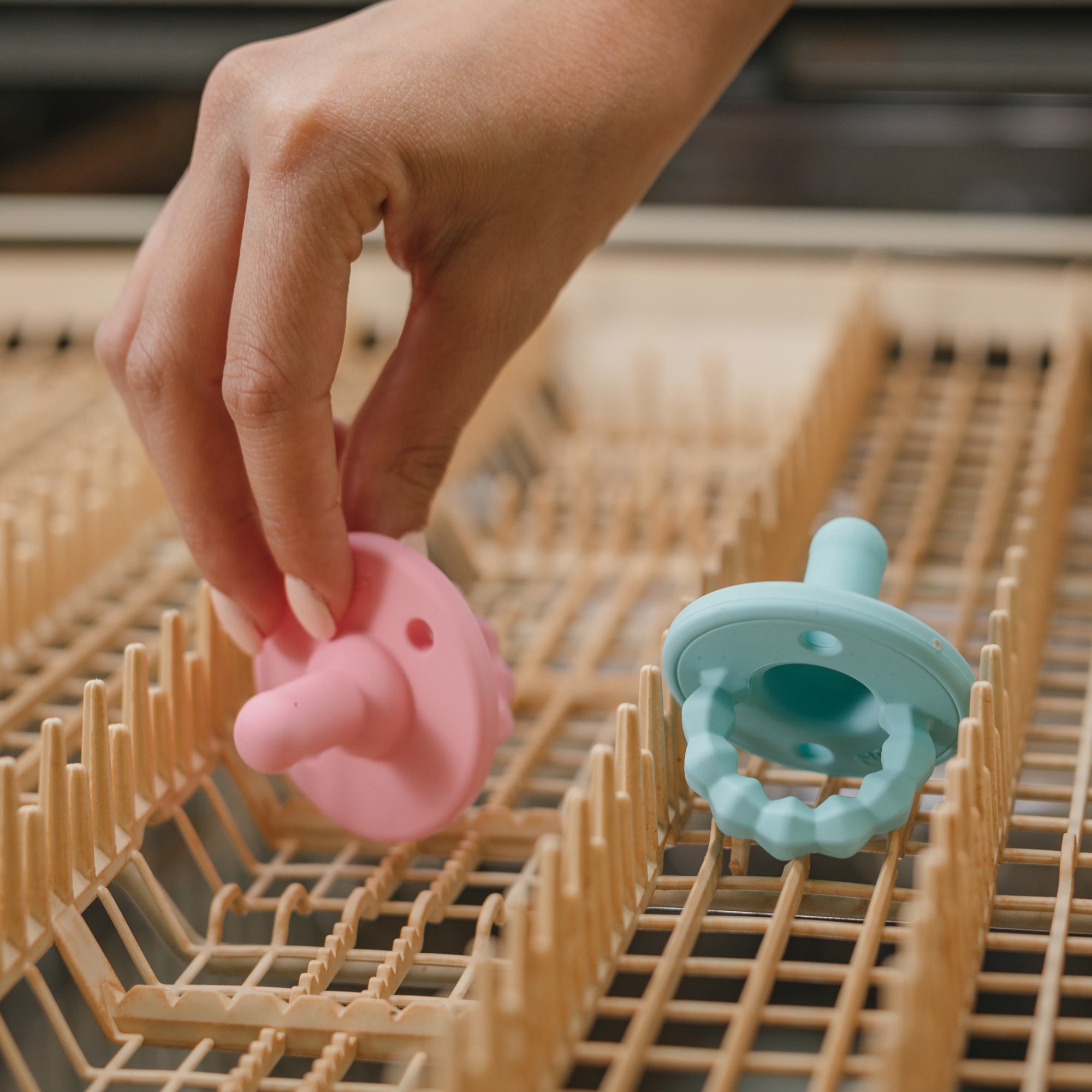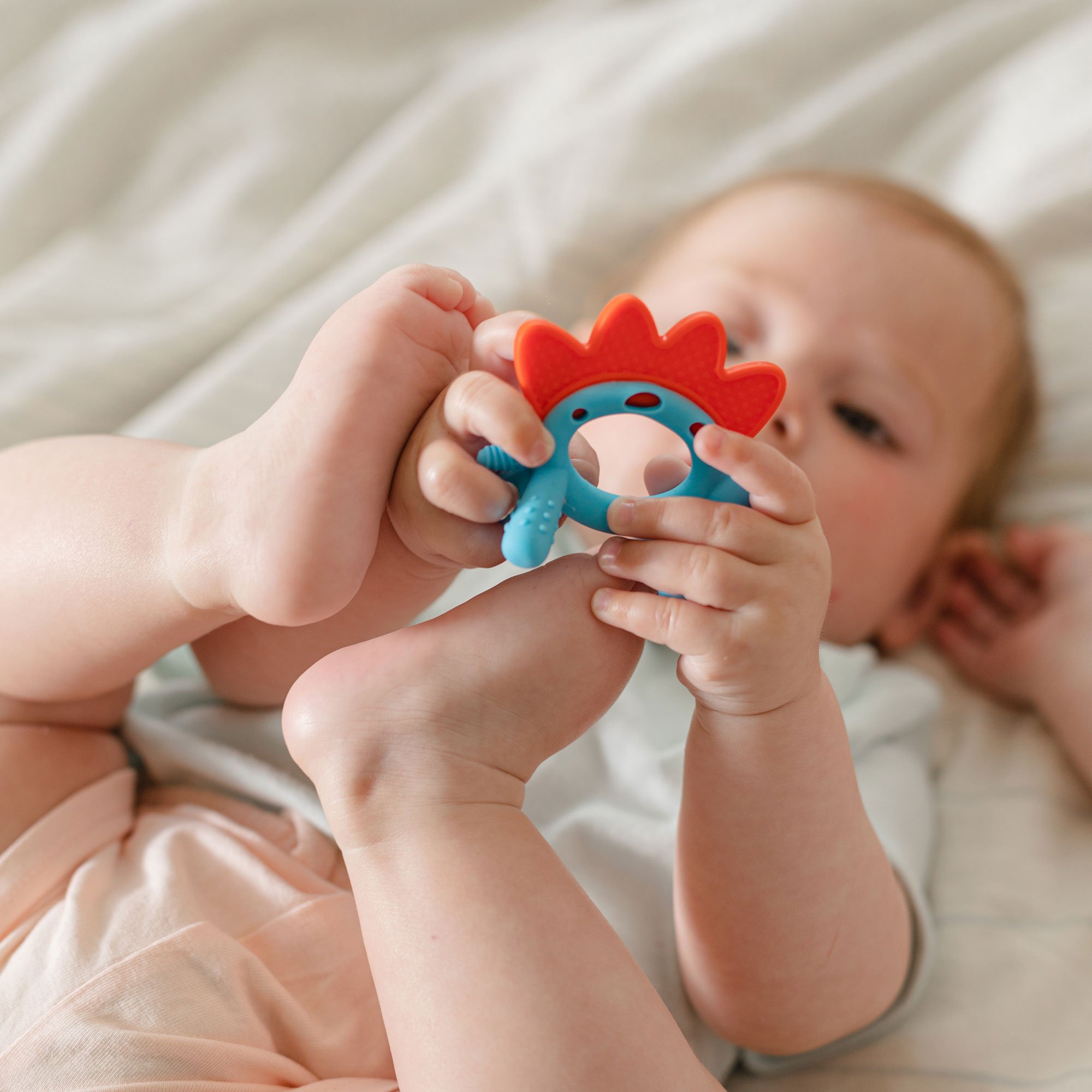New parents can all agree that teething toys are a fantastic tool to help relieve your child's pain during the teething phase while providing a fun and interactive toy to keep them occupied.
These toys are designed to be safe and comfortable for your child to chew on when they feel the teething pressure. But, like with many toys, they'll likely end up on the floor, between sofa cushions or car seats, dropped outside, or even in the mouths of pets. So, this raises a very important question - how do you clean teething toys?
Here, we'll go through the best ways to clean teething toys based on their material.

How often should you wash teething toys?
How often you clean teething toys depends on how much they're used. Teethers that are well-loved and used daily should ideally be washed after every use - especially if you have a young baby, such as two or three months old, whose immune system hasn't fully developed yet.
As they get older and the toys are used less often, they can be washed every two to three days. Of course, if they've dropped them on the grass outside, in a puddle, or if your dog or cat decided they wanted to play with them too, wash the toys immediately before giving them back to your child.

5 ways to clean teething toys
Below are five popular ways to clean teething toys:
1. Dishwasher
Most of our teething toys are top-rack dishwasher safe, which is always an option for a quick wash and rinse. Although it may be the most convenient method, just know that it won’t fully sanitize the toys if you’re looking for a deeper clean.
2. Boiling Water
The boiling method is a tried and tested way of cleaning your child's teething toys and works particularly well for hard plastic or wooden toys. Simply boil the toys in water for 5-10 minutes, killing any and all germs, and allow them to dry and cool down completely before giving them back to your child.
3. Sterilization machines
Did you know that the machine you use can for sterilizing your bottles can also sterilize toys? Whether it's steam or UV, most silicone and plastic teething toys can be cleaned in them. Not only is this a quick and easy way of cleaning teething toys, but it's hands-free, too, allowing you to get other tasks done.
4. Baking soda & water
Using baking soda and water is a safe and natural method to clean and sanitize your kids' teething toys. Create the mixture of water and baking soda and soak the toys in it for five to ten minutes before drying them off. Or, use the mixture to wipe the toys down, dry them, and give them back to your child. This is a great method if you’re unsure if a toy is safe to boil or use with a steam sterilizer.
5. White vinegar & water
Although white vinegar may not smell the best, it's one of the safest and most thorough ways of cleaning teething toys. Mix an equal amount of white vinegar and water together in a bowl and let the toys soak in it for a while. Once you think they are clean enough, dry the toys off and give them to your little one.

How to sanitize silicone teethers
Silicone teethers are very low maintenance, and any of the above methods will be suitable to clean and sanitize them. Since all of our silicone teethers are made from food-grade silicone, they can withstand high heat, meaning you can use the boiling method to sanitize without worrying about material warping. You can also wash them quickly with warm, soapy water if your child is being a little impatient and then clean them more thoroughly when they've gone to bed.
How to disinfect wooden teethers
For wooden teethers, you may be tempted to use cleaning products for wood or disinfectant wipes, but these can leave behind a toxic residue and should not be used. The best way to clean and sanitize wooden teethers is to use a clean sponge, water, and dish soap to wipe them clean. You can also use the white vinegar and water method and the baking soda and water method as a natural cleaning method.
When should you throw away teething toys
Since teething toys will be chewed and bitten relentlessly by your child, you may notice signs of wear and tear afterward. While teething toys are designed to withstand little teeth, it's still important to inspect them regularly to ensure they are still suitable for your child. If the teether is broken or has any signs of weakness and damage, you should replace them.
Can you reuse teething toys?
If you have a second child about to enter the teething phase, we don't recommend reusing a previous teether as it can become contaminated after being stored away for some time. It's best to get them new teethers they can safely and comfortably chew on.
Take a look at our full range of teething toys, including cooling teethers and teething mittens.



